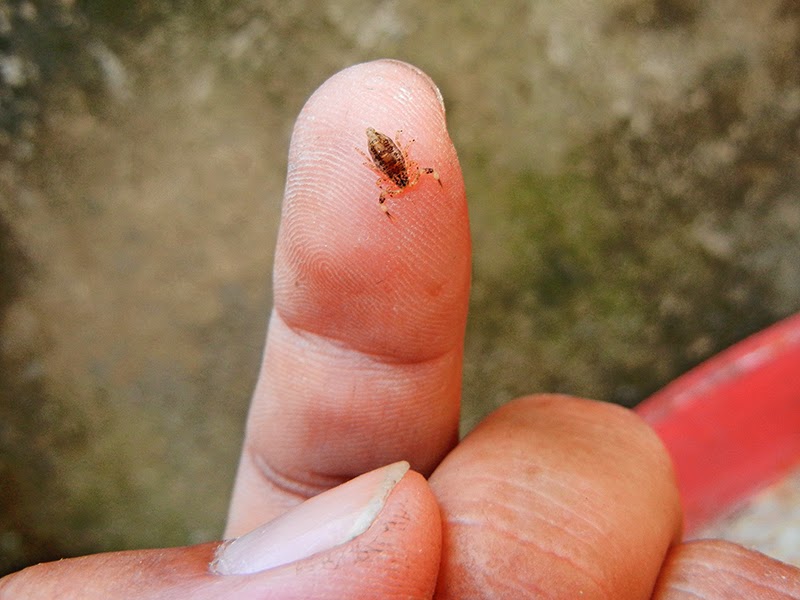 |
| Two-tailed female Centruroides nitidus with scorplings on her back. |
Body malformations and anomalies in scorpions are reported from time to time. One of the most famous cases was Pepe - The two-tailed scorpion (a Centruroides excilicauda with two tails). In a recent article, Michael Seiter and Rolando Teruel report of two more cases of metasomal duplication (two-tailed scorpions). Interestingly, the female Centruroides nitidus (Thorell, 1876) with two tails grew up, mated and got offspring.
Abstract:
Herein we report two further cases of metasoma duplication in buthid scorpions: a second instar juvenile Tityus obscurus (Gervais, 1843) and an adult female Centruroides nitidus Thorell, 1876. Both individuals were born in captivity; the former died after its first ecdysis, but the latter reached adulthood and reproduced normally. This represents the first published record of the occurrence of such an anomaly in either species.
Reference:
Seiter M, Teruel R. Two new cases of metasomal duplication in scorpions, with notes on their reproductive biology (Scorpiones: Buthidae). Revista Iberica de Arachnologia. 2014 (24):127-9.
Thanks to Rolando for sending me his article!















